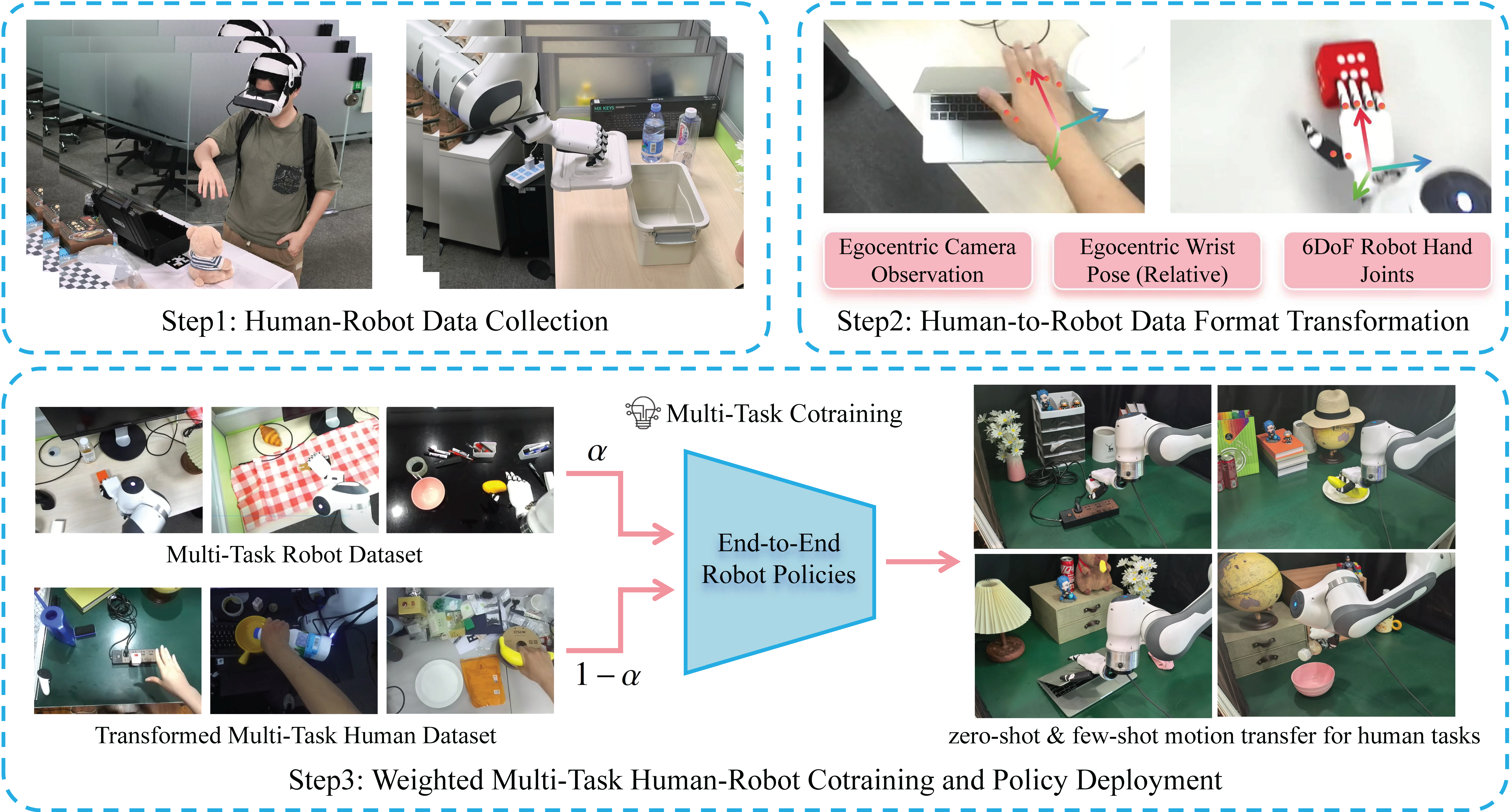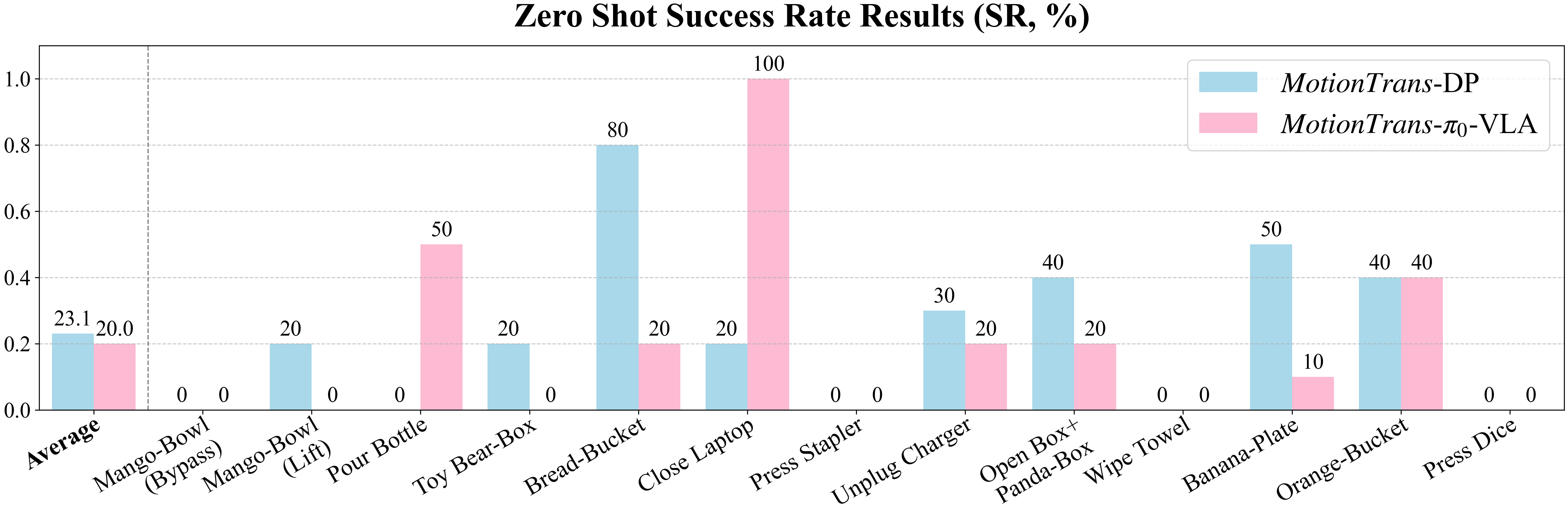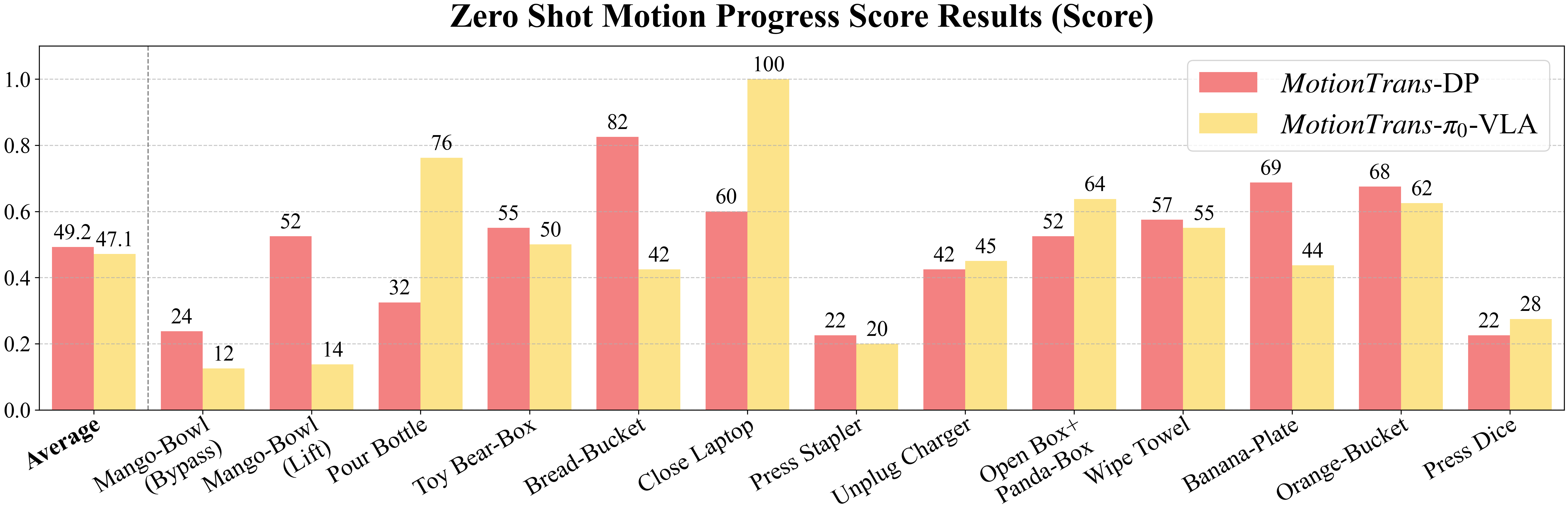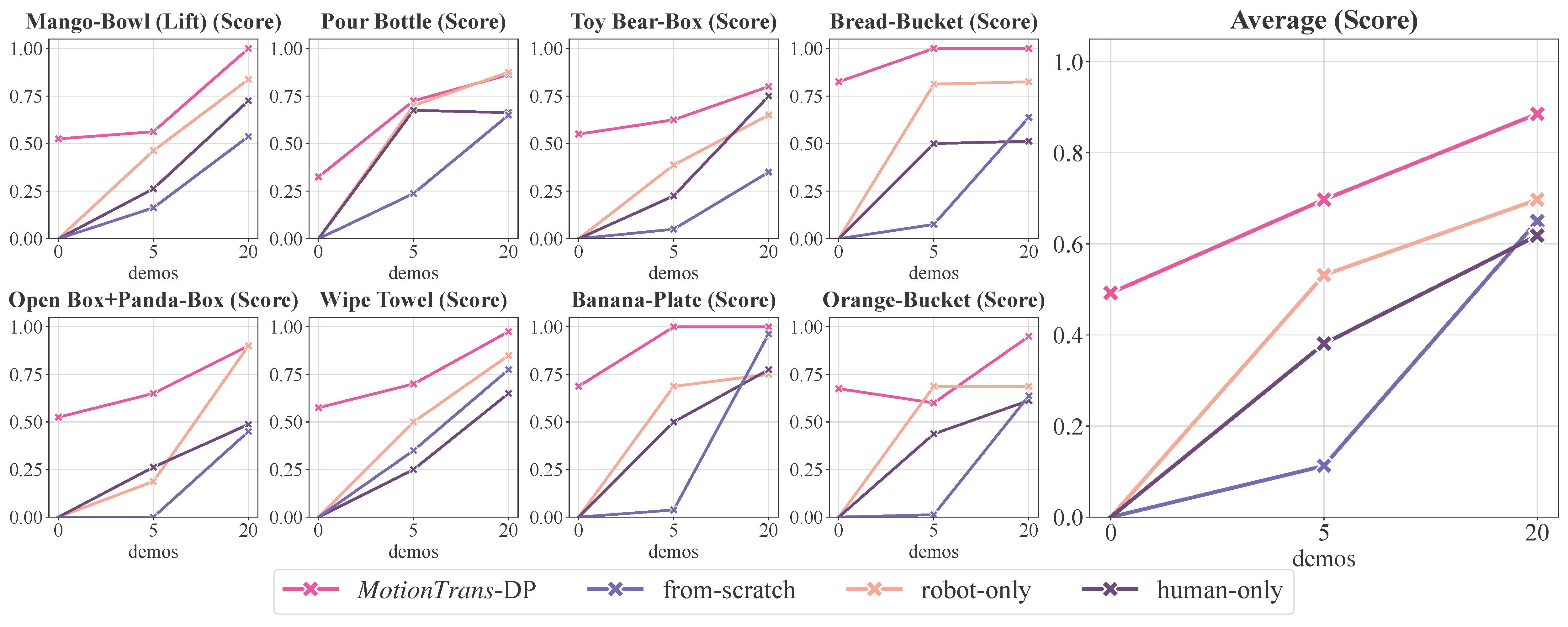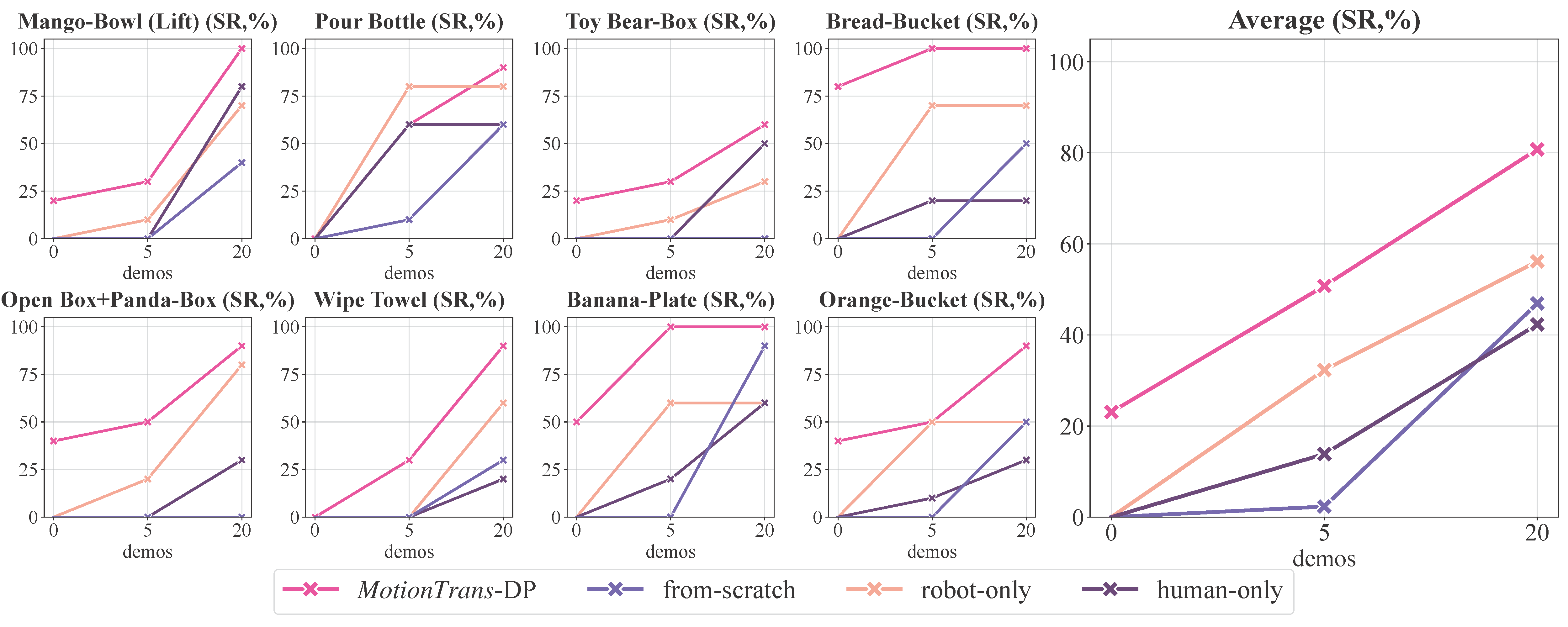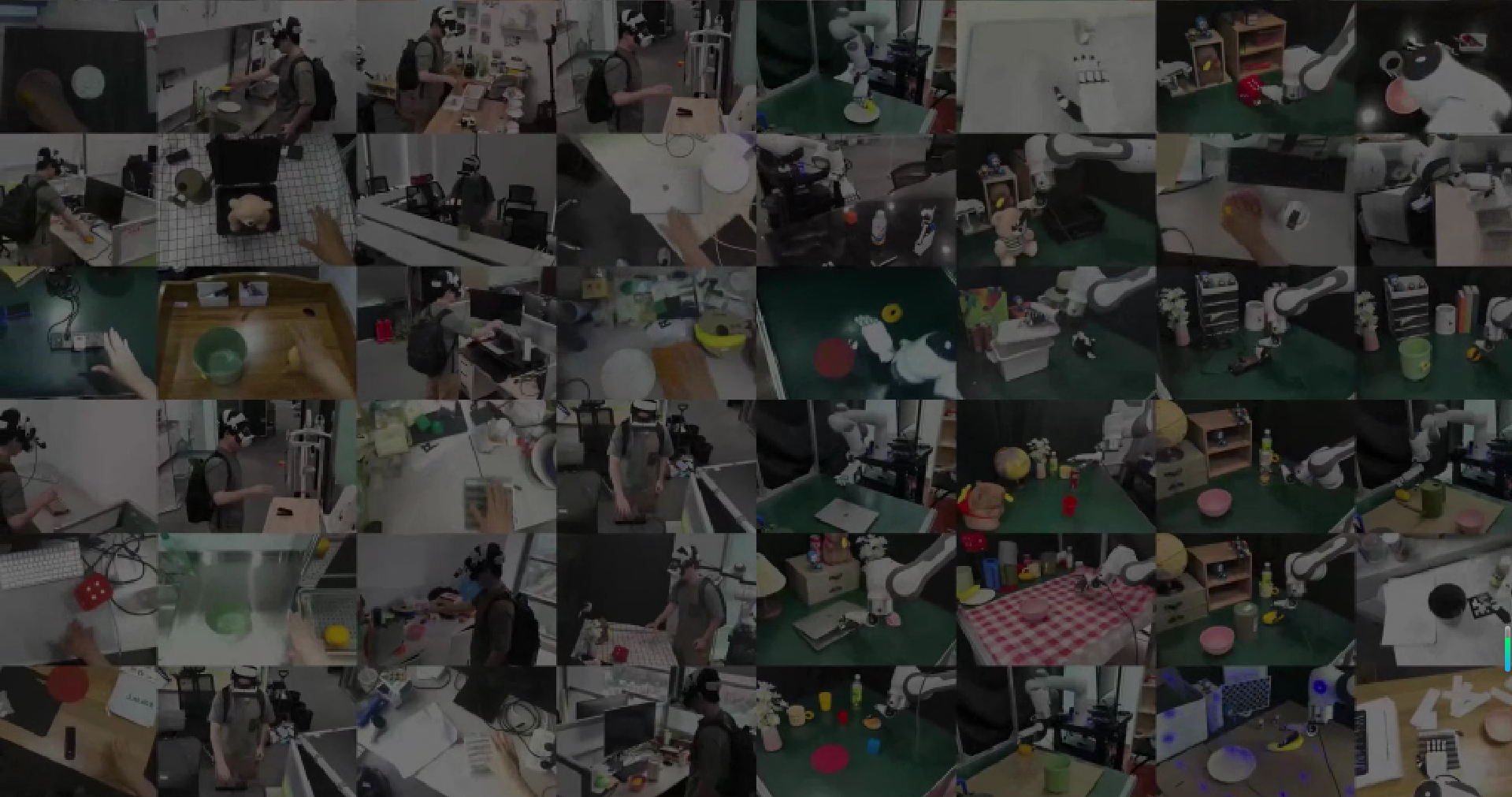
MotionTrans MotionTrans Human VR Data Enable Motion-Level Learning for Robotic Manipulation Policies
Chengbo Yuan1,2
Rui Zhou*5
Mengzhen Liu*3
Yingdong Hu1,2
Shengjie Wang1,2
Li Yi1,2
Chuan Wen4
Shanghang Zhang3
Yang Gao1,2†
1 Institute for Interdisciplinary Information Sciences, Tsinghua University
2 Shanghai Qi Zhi Institute
3 State Key Laboratory of Multimedia Information Processing, School of Computer Science, Peking University
4 Shanghai Jiao Tong University 5 Wuhan University
* Equal contribution † Corresponding author
3 State Key Laboratory of Multimedia Information Processing, School of Computer Science, Peking University
4 Shanghai Jiao Tong University 5 Wuhan University
* Equal contribution † Corresponding author

